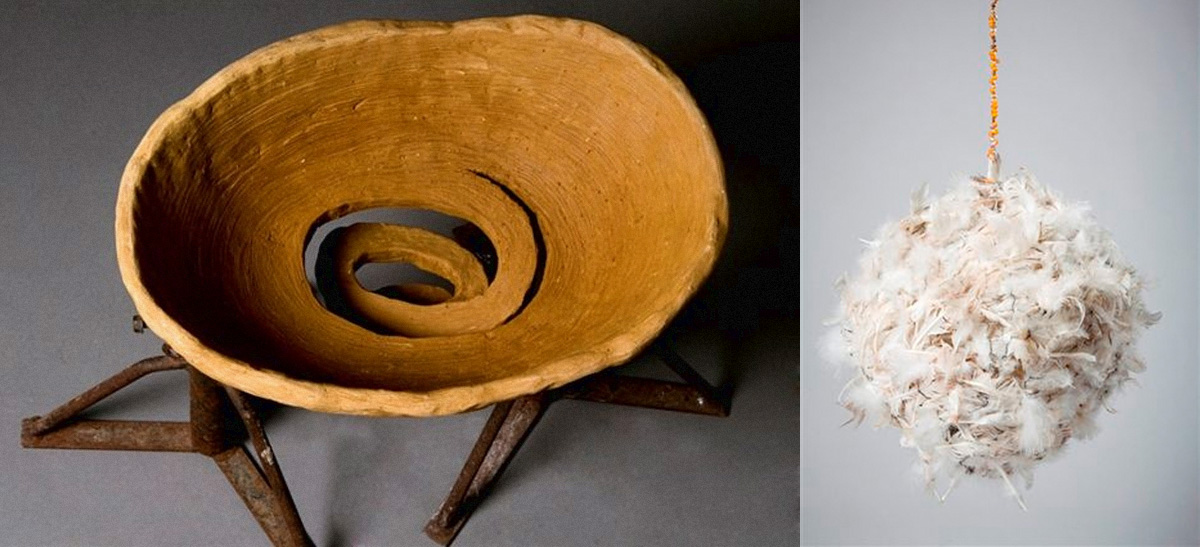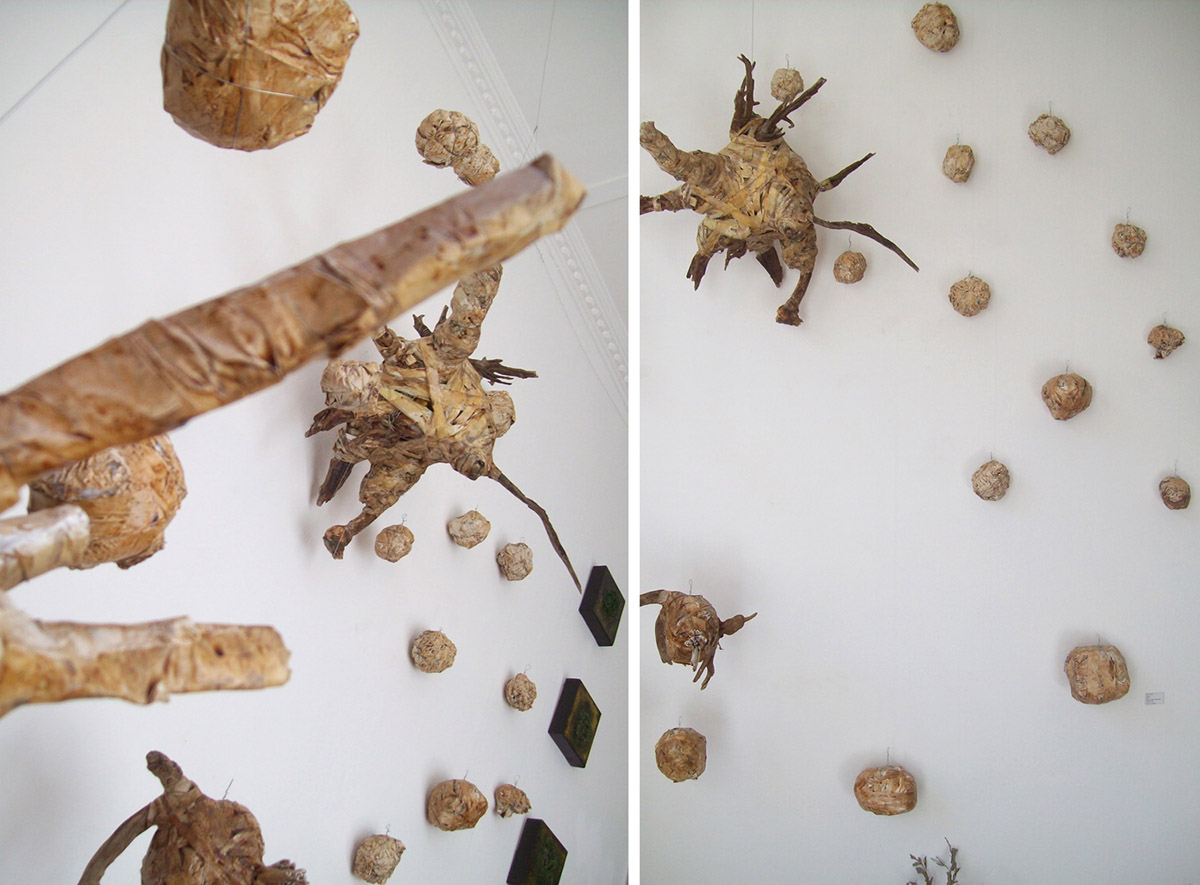What is “Green Art” or “Environmental Art”? Throughout the ages, artists have responded to the challenges and issues relevant and prevalent during their lives. Currently, we are faced with the loss of biodiversity, with many species of animals, birds, insects, and reptiles on the brink of possible extinction, or already extinct. We are beset with environmental, social, and economical instability. This is partly, if not largely, due to the unequal distribution of wealth and resources, the abuse and depletion of resources, greed, and pollution. These issues or themes are increasingly becoming a focus and inspiration for artists throughout the world.
Environmentally-focused art could play a very significant role in collective concern and activism, as one of art’s main premises is to question and challenge accepted perceptions, values, or beliefs. Art also offers new solutions and inspires new understandings about the world around us, therefore playing an important role in how we change our actions and our relationship with the earth.p
Any artwork goes through a process, which needs materials, techniques, and a concept to be molded or transformed into existence. Each and all of these different elements within the process have a role to play in the impact that artists have on the earth. For Simon Max Bannister, South African land artist and sculptor, the most effective Green art is about an economy of material and energy.
MATERIAL
Any artwork needs a source material; the basis, or substrate, for its creation. Without material substance, it remains merely an idea; a ghost image of what it could become. This basis or source material - the canvas and paint for a painting, the paper, and charcoal for a sketch, or the granite slab for a sculpture - is essential to consider, since the way and place it is obtained from has an impact, not only on the environment but often also on other living creatures. The tools used for crafting the materials have equal importance, as well as the way the artist disposes of any broken tools, failed attempts, and waste materials. Let's have a look at two simple examples:
- Pigments for paints are either excavated from the earth, in the form of minerals and colour-rich rocks, or synthetically-produced in a laboratory. When considering that there are at least 4 million artists on the planet (a 2001 Population Survey were used to ascertain that 2 108 000 people were employed in primary jobs as artists in the United States ), the amount of pigment produced and sourced does have an impact on the earth, through the effects of mining, and the pollution (air and chemical pollution) resulting from the production.
- Paper can be seen as one of the most-used materials for expression since it is not only a popular medium for artists, but also utilized by writers, businesses, schools, households, the print media, and countless other industries. This plays a significant role in deforestation, which is a key contributor to global warming. The bleaching process that paper undergoes, and the vast amount of water used in the process, also has major repercussions, when looking at paper's environmental footprint, or impact.
Earth-friendly materials are steadily becoming more easily available and there are many guides available (both online and in libraries) on how to make your own materials. Using waste materials from industry or households is a contemporary and increasingly popular “green” technique, which helps fight pollution. New artworks, solutions, and spaces for interaction can be created while using less water-intensive techniques, oil by-products, and synthetic or chemical materials.
 Left: 'Receiving V: Abortion' by Katharina Forster, 2010,Medium: mixed media found clay, steel holder & natural sponge. Right: 'Chicken Monument' by Katharina Forster, 2010, Medium: other media chicken feathers, wire, and thread. Created in despondence to the cruelty in chicken mass production, their small cages, cut off beaks, and hormone intakes.
Left: 'Receiving V: Abortion' by Katharina Forster, 2010,Medium: mixed media found clay, steel holder & natural sponge. Right: 'Chicken Monument' by Katharina Forster, 2010, Medium: other media chicken feathers, wire, and thread. Created in despondence to the cruelty in chicken mass production, their small cages, cut off beaks, and hormone intakes.
THEME OR CONCEPT
Debates, discussions, and symposiums are being held, books are written, companies launched and news broadcasted, all centered on global warming and sustainability. The environment and animals are being endangered, resources abused and habitats destroyed. Pollution and chemical foods are taking their toll on people's health, and social unrest is resulting from a scarcity of food and water in various regions and countries. At the same time, nature is exhibiting its resilience and ability to heal. It gives nourishment and abundance when treated with respect; and continues to grow and flourish in areas where it's being protected and left untainted.
"The natural world and all its wonders", "the relationship of humans with nature", "the relationship between humans and animals", "the impact of human activities on ecology", and “ecosystems” are all broad themes that provide an unending source of inspiration for artworks, lending opportunities for exploration and interrogation of the subjects, and for questions to be asked and potentially answered. Many artists are answering the call to action and creating artworks that either raise awareness for a specific environmental issue or concern or focus attention on the beauty and awe of nature, in order to encourage respect, appreciation, and the will to protect it.
Throughout the ages, art has been inspired by the landscapes around us: the sacred sites, the forests, rivers, oceans, and mountains. However, when this inspiration is expressed using materials that support or induce harm to the environment, or animals, it can be perceived as an empty gesture; a purely self-serving act.
INTEGRATING CONCEPT, MATERIAL, AND TECHNIQUE
When the concept of any artwork is mirrored or conceived within the material substance and tools of the piece itself, a truly powerful artwork can be created. When this happens, the entire process of creation becomes a part of the concept and the intention. Often, even the technique is allowed to grow and develop through this process.

Consider the following possibilities:- Creating a landscape painting with pigments and ground rocks from the specific area being painted;
- Working or creating on-site, rather than the studio, when it's possible, or relevant;
- If doing a very personal artwork, using your own hair to fashion a paintbrush;
- Making your own paper from torn old letters, documents, or other paper that enhances your concept;
- Using natural materials, such as leaves, rocks, sand, tree-gum, bark, and seedpods, to create sculptures or other artistic expressions.
When choosing materials and techniques for your art, think about the following:
- Does your paint contain synthetic pigments, and if so, why? If it's to preserve an endangered species, then the use of such products is warranted, but if the synthetic paint is hazardous in any way, then think twice about using it, and thereby supporting its continued manufacture.
- Think about what you'll do with the tubes afterward. Maybe flatten them out and use them to create new artworks or containers for art materials. Throwing something away just sends it to the landfill, from where it could easily seep toxins from unnatural waste into underground water tables.
- Are your materials imported from another country? Is there an alternative of equal quality produced locally? If not, could you choose another brand which is imported from a country located closer to yours?
- What are your brushes made of? Research the difference between animal hair brushes and synthetic brushes. How are the hairs made or obtained?
- Does your paper come from sustainable sources or plantations, rather than illegal plundering of virgin forests?
- How much water is used in creating your art materials and artworks?
Certain qualities, or factors, which could be involved in creating powerful and successful art, are as follows:
- the integrity of the materials;
- the involvement of the artist with the process, materials, and subject;
- the indigenous quality and locality of an artwork.

'Organic' by Janet Botes, 2009/2010, Medium: found wood, masking tape, coffee and wire, built around a core of discarded plastic and bundled newspaper.
In part 2: different forms and techniques used in "green art">>
Written by Janet Botes
www.janetbotes.co.za
Read more about Green Art by Janet Botes on her website.
This article is part of a series of Hints and Tips to help you create your artwork for the StateoftheART Gallery Award to the 2021 Award Theme: 'On The Brink: Visualising Climate Change'. The Award is an online platform and accessible opportunity for emerging South African visual artists and the application is completely free of charge.

